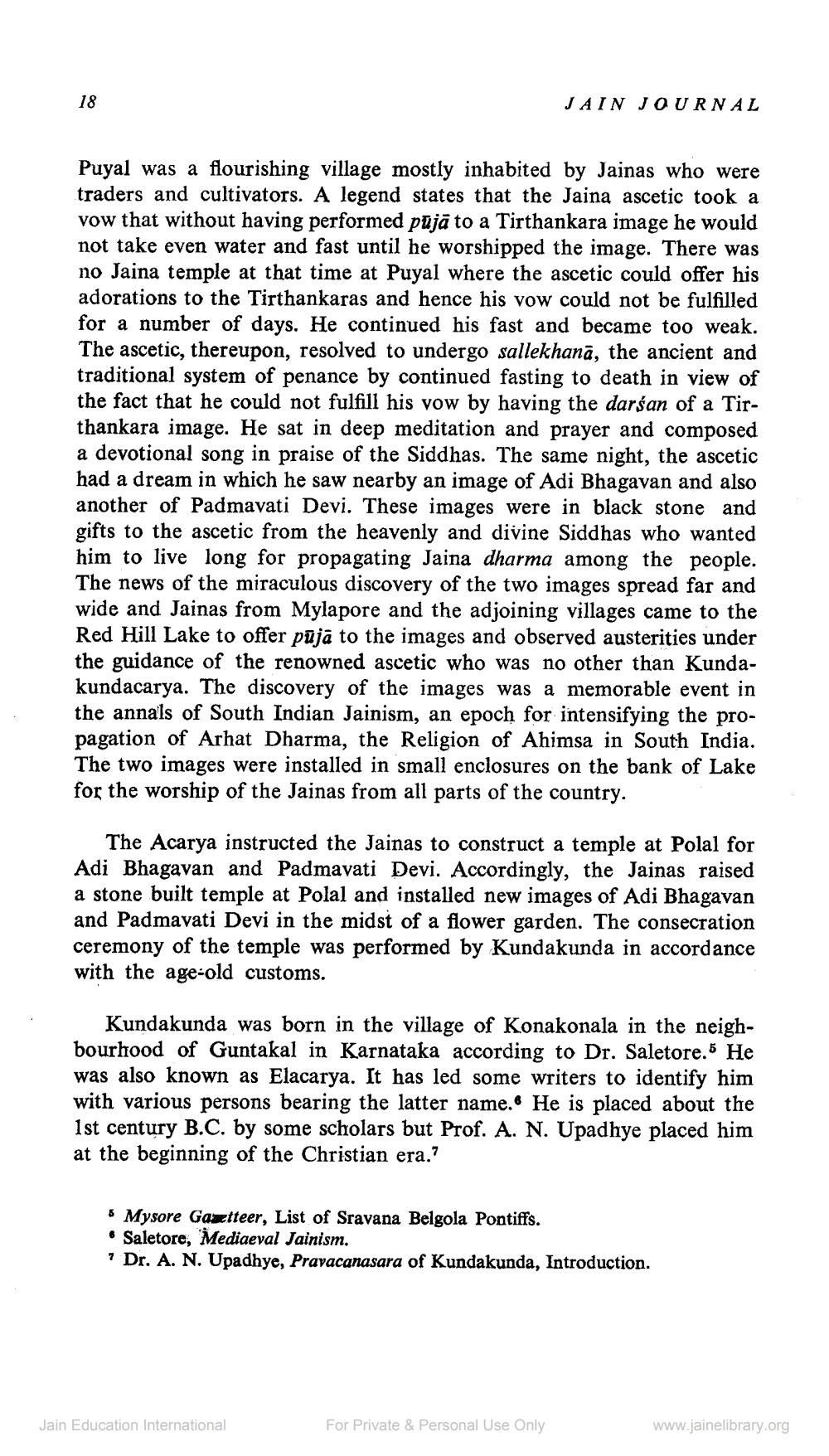________________
18
Puyal was a flourishing village mostly inhabited by Jainas who were traders and cultivators. A legend states that the Jaina ascetic took a vow that without having performed pūjā to a Tirthankara image he would not take even water and fast until he worshipped the image. There was no Jaina temple at that time at Puyal where the ascetic could offer his adorations to the Tirthankaras and hence his vow could not be fulfilled for a number of days. He continued his fast and became too weak. The ascetic, thereupon, resolved to undergo sallekhana, the ancient and traditional system of penance by continued fasting to death in view of the fact that he could not fulfill his vow by having the darśan of a Tirthankara image. He sat in deep meditation and prayer and composed a devotional song in praise of the Siddhas. The same night, the ascetic had a dream in which he saw nearby an image of Adi Bhagavan and also another of Padmavati Devi. These images were in black stone and gifts to the ascetic from the heavenly and divine Siddhas who wanted him to live long for propagating Jaina dharma among the people. The news of the miraculous discovery of the two images spread far and wide and Jainas from Mylapore and the adjoining villages came to the Red Hill Lake to offer puja to the images and observed austerities under the guidance of the renowned ascetic who was no other than Kundakundacarya. The discovery of the images was a memorable event in the annals of South Indian Jainism, an epoch for intensifying the propagation of Arhat Dharma, the Religion of Ahimsa in South India. The two images were installed in small enclosures on the bank of Lake for the worship of the Jainas from all parts of the country.
JAIN JOURNAL
The Acarya instructed the Jainas to construct a temple at Polal for Adi Bhagavan and Padmavati Devi. Accordingly, the Jainas raised a stone built temple at Polal and installed new images of Adi Bhagavan and Padmavati Devi in the midst of a flower garden. The consecration ceremony of the temple was performed by Kundakunda in accordance with the age-old customs.
Kundakunda was born in the village of Konakonala in the neighbourhood of Guntakal in Karnataka according to Dr. Saletore.5 He was also known as Elacarya. It has led some writers to identify him with various persons bearing the latter name. He is placed about the 1st century B.C. by some scholars but Prof. A. N. Upadhye placed him at the beginning of the Christian era."
5 Mysore Gazetteer, List of Sravana Belgola Pontiffs.
Saletore, Mediaeval Jainism.
Dr. A. N. Upadhye, Pravacanasara of Kundakunda, Introduction.
Jain Education International
For Private & Personal Use Only
www.jainelibrary.org




